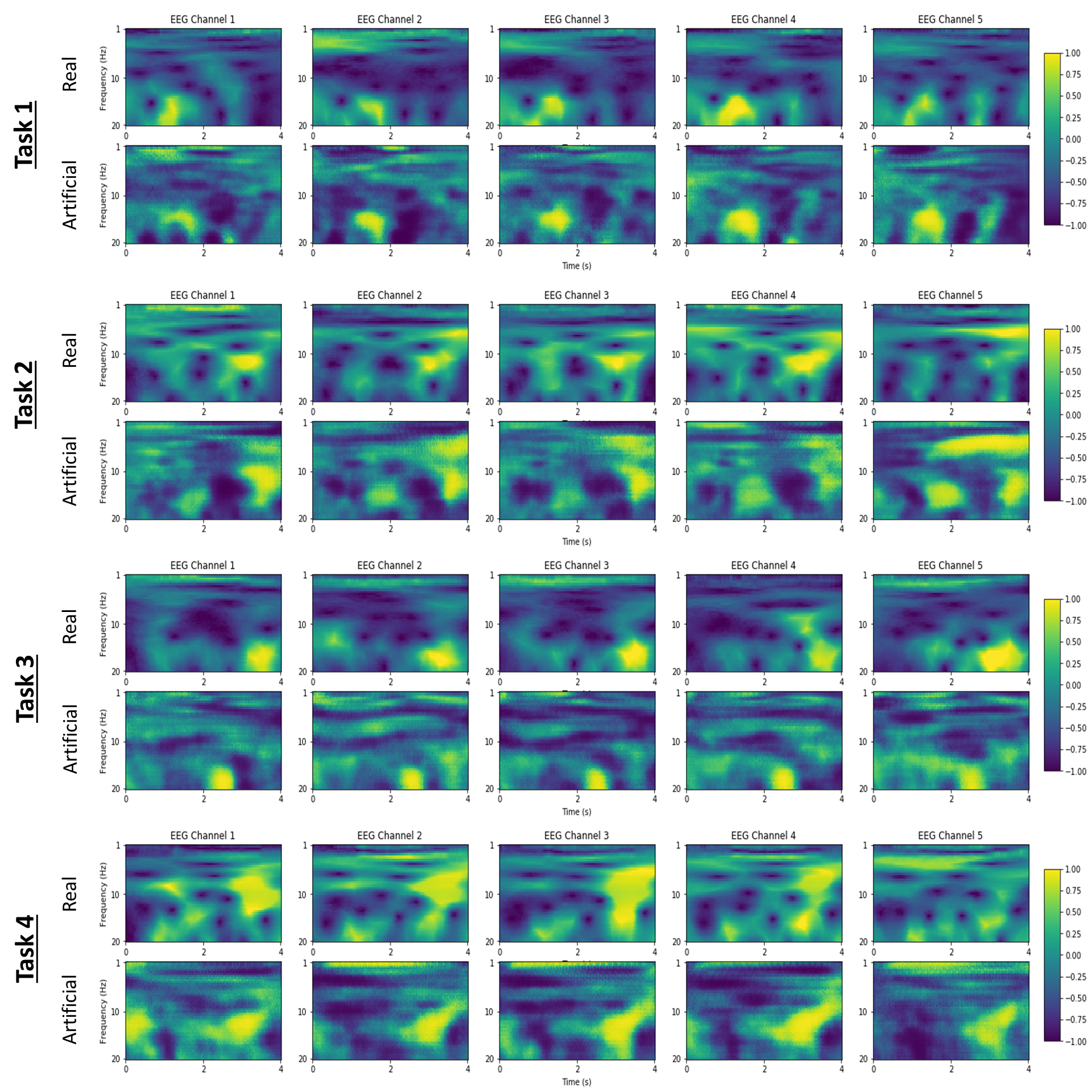Generative Adversarial Networks for Enhanced EEG-Based Motor Imagery Classification
Posted:
Krish Kabra, Daniel Truong, Calvin Chang
Course: ECE247: Neural Networks and Deep Learning
Instructor: Prof. Jonathan Kao
Quarter: Winter 2020

Examples of generated continuous wavelet transformed EEG data for all 4 motor imagery tasks in the BCI Competition IV, Data sets 2a. Each column corresponds to a different EEG channel. A comparison between real input data and generated data shows that the proposed Wasserstein GAN with gradient penalty has learnt features. We note these examples were hand-picked, and that there is a wide variety of signal data.
Abstract
Convolutional neural networks (CNN) are shown to be extremely successful at motor imagery task classification with high accuracy. However, a major pitfall of deep learning models is the necessity to train with large datasets. In this report, we procure artificial EEG data from a limited dataset using generative models such as the generative adversarial network (GAN) and variational autoencoder (VAE). We show approximately 4% improvement in task classification when using a mixed training set containing both real and artificial data generated by a GAN. We fail to train a VAE and discuss possible reasons, as well as future directions.
